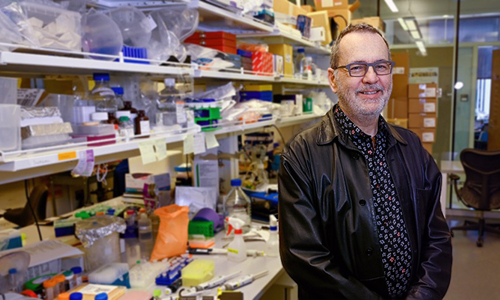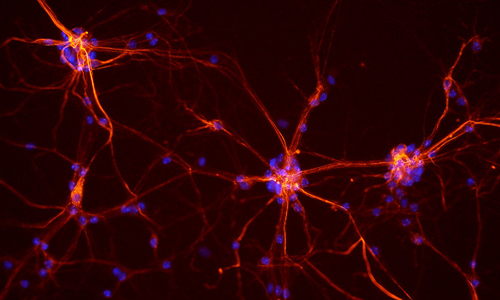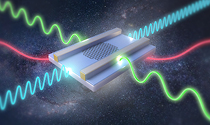|
|
|
|
| |
Welcome to the October edition of µChicago, which brings the top research news from across the University right to your inbox. This month read about the “inverse vaccine” showing promise in autoimmune treatment, a potential opioid alternative, and some small studies. |
|
| |
|
|
|
| |
Flipping the script on vaccines |
|
| |
|
|
|
|
|
| |
| |
|
|
| |
Image: Research led by Jeffrey Hubbell, the Eugene Bell Professor in Tissue Engineering, could have a critical impact on the treatment of autoimmune diseases. (Photo by Matt Marton) |
|
| |
|
|
|
|
| |
|
|
|
| |
A new type of vaccine that targets autoimmune diseases shows promising results in preclinical trials. A Pritzker School of Molecular Engineering team led by Jeffrey Hubbell found that the vaccine can completely reverse autoimmune diseases like multiple sclerosis and type 1 diabetes. The so-called inverse vaccine works in the opposite way of a typical shot: it marks certain cells as familiar, rather than as invaders, to prevent an autoimmune reaction. Treating autoimmune diseases this way could have fewer side effects than current treatments that suppress the immune system. |
|
| |
|
|
|
|
|
|
|
| |
|
|
|
| Tiny time: To increase the precision of measurements within a quantum system, scientists at Argonne National Laboratory are using a technique called “quantum squeezing” to adjust noise that can interfere with accurate readings. This could improve measurements of gravitational waves and the accuracy of atomic timekeepers. |
|
|
|
| |
|
|
|
|
|
| |
|
|
|
| Ion the path ahead: In two groundbreaking studies, UChicago scientists used a sensor made of DNA to “hitchhike” through cell organelles, tracking the path of crucial ions like salt and potassium within the cell and shedding light on disease progression at a cellular level. |
|
|
|
| |
|
|
|
|
|
| |
|
|
|
| Mapping microbes: A new statistical model can generate a topographical “map” that predicts the effectiveness of mixed microbial communities for specific purposes, such as eliminating soil pollutants or restoring healthy digestion. |
|
|
|
| |
|
|
|
|
|
|
|
|
|
| |
| |
|
|
| |
Image: Neurons from a mouse spinal cord. (NICHD/S. Jeong) |
|
| |
|
|
|
|
| |
|
|
|
| |
Is there an alternative to pain relief that doesn't include the negative effects of opioids? When researchers injected a drug to stimulate acetylcholine receptors in the brains of mice, they found it produced an analgesic state but did not trigger reward systems, induce tolerance, or cause withdrawal symptoms. The understudied signaling pathway shows potential for developing opioid-free drugs for patients with chronic pain, according to Daniel McGehee, professor of anesthesia and critical care at UChicago and the paper’s senior author. |
|
| |
|
|
|
|
|
|
|
| |
UChicago computer scientists have designed a backpack that mimics the feelings of jumping and falling—watch the pack in action. |
|
| |
|
|
|
|
|
| |
| |
|
|
| |
There’s something in the water:
Researchers are fueling carbon-free technology with resources found in water and a geophysical scientist explains this summer’s historic weather.
|
| |
|
|
|
|
|
|
| |
|
|
|
|
|
| |
| |
Visit the Alumni & Friends website for stories, podcasts, and other features, curated for you on UChicago Review. Create an account for a more personalized experience. |
|
|
|
| |
|
|
|
|
| |
| |
Sign up to receive µChicago monthly. |
|
|
|
| |
|
|
|
|





